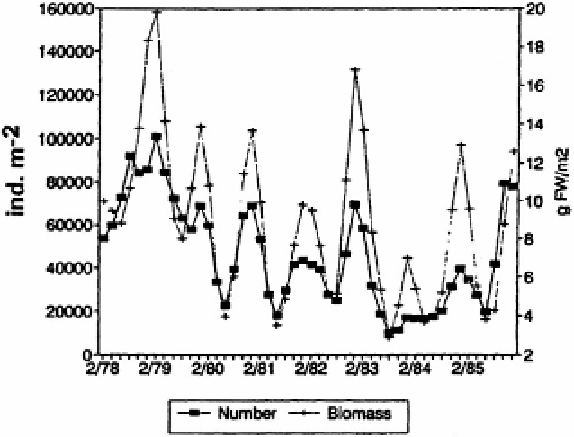Agriculture Reference
In-Depth Information
At a mesoscale level, Enchytraeidae have strongly-aggregated horizontal distributions
in all types of ecosystems (
e.g.,
O'Connor, 1967; Albrecht, 1984; Chalupsky and Leps,
1985; Römbke, 1991). They form multispecies aggregates, 30 to 50 cm in diameter, very
similar from one site to another (Albrecht, 1984).
These aggregations may be caused by (i) - restricted dispersal of individuals after
hatching from cocoons or the fragmentation of asexual individuals; (ii) - alternatively,
individuals may favour microsites with the most attractive abiotic conditions and
highest food availability. The latter effect may well predominate as adults appear
slightly more aggregated than juveniles and asexually reproducing species show similar
patterns; and (iii) - gregariousness that may be interpreted as a semi-social behaviour
to increase efficiency of the 'external-rumen' type of digestion (see Chapter III.4.4.1.2).
Most Enchytraeidae are concentrated in the upper 6 to 10 cm with some differences
among species (Healy, 1980). Most species are epigeic (hemi-rather than epiedaphic) but
some polyhumic endogeics (i.e., euedaphic) populations may descend down to 20-40cm
in the soil, (see
e.g.,
Persson and Lohm, 1977; Lagerlöf, 1987). Seasonal changes in depth
distribution may occur as Enchytraeidae descend deeper into the soil to escape drought
or frost at the soil surface.
Temporal variation
Enchytraeid populations generally show distinct seasonal changes with highest densities
occurring during winter (Figure III.40).


